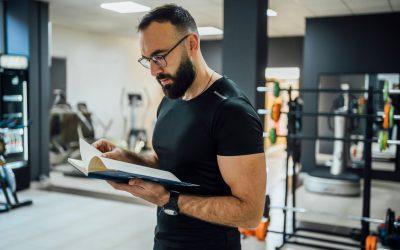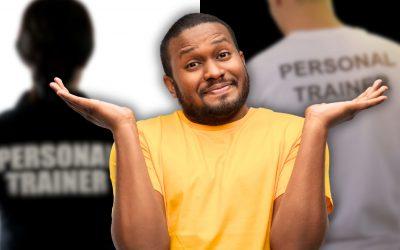Injury in sport is perhaps one of the most challenging obstacles for an athlete to overcome, and, potentially, one of the most damaging factors to mental state. This psychological damage is often more disruptive than the physical damage, and the way in which the athlete responds to injury often determines their success (or not) going forward. In this blog, we introduce Stoic Philosophy and give a practical template for how it can be used to respond to injury.
We don’t control what happens to us, we control how we respond to what happens to us.
In sport and exercise, like in life, there are many strategies that can be used to deal with hardship. Stoicism is a branch of philosophy that deals wth how we respond and react to our world, and teaches that although we may not be able to control every element of our environment (and what happens to us), we can control how we INTERPRET and RESPOND to our environment. It can teach us much about dealing with adversity.
“If you are distressed by anything external, the pain is not due to the thing itself, but to your estimate of it; and this you have the power to revoke at any moment.”
– Marcus Aurelius
To learn more about Stoic Philosophy, check out the following resources:
- BOOK: The Obstacle Is the Way: The Timeless Art of Turning Trials into Triumph, by Ryan Holiday, also available at Blinkist.
- YOUTUBE: STOICISM – MEDITATIONS BY MARCUS AURELIUS ANIMATED BOOK REVIEW.
- YOUTUBE: STOICISM – ON THE SHORTNESS OF LIFE BY SENECA | ANIMATED BOOK REVIEW.
- YOUTUBE: Practical Stoicism – How To Use Stoic Approach to Feel Bulletproof.
There are of course many elements of our environment that we CAN control, and in an exercise setting we can swing ‘chance’ in our favour and ‘make our own luck’. Read: 11 Strategies to Become an Injury Free CrossFitter. But for those factors out of our control, stoicism can teach us much about how we respond to injury.
“You have power over your mind – not outside events. Realise this and you will find strength.”
– Marcus Aurelius
In ‘The Obstacle Is The Way’, the author Ryan Holiday proposes three key elements of turning obstacles to our advantage: Perception, Action and Will. We can apply these three stages to injury in sport to create a template to respond to injury.
Perception:
“If we can see an obstacle in the right light, we can reveal the hidden possibilities we can use to our advantage.“
Immediately following an injury, it’s natural to enter a period of negativity. This negativity comes from our perception of the injury, and a focus on what we cannot do, not what we can do. This approach is problem focused, not solution focused. The injury has happened, and that is out of our control. But we can control the perception. We must shift our view to seeing the obstacle as an opportunity. Not long before the 1988 Olympic Games, Australian swimmer Duncan Armstrong broke his arm and perceived his Olympic dream to be over. His coach, Laurie Lawrence took a stoic approach and devised a punishing training regime to strengthen Duncan’s legs. Duncan went on to win gold in the 200m freestyle, coming from behind in the last lap thanks to his superior kick. He later said that he wouldn’t have won Olympic Gold if he hadn’t broken his arm.
By changing our perception, we can look for opportunities that may otherwise have not been presented to us.
“But perception alone is not enough. When you are faced with an obstacle, you also need to respond with the correct action. The correct action is born from the combination of creativity and flexibility.“
The actions we take in our training allow the physical manifestation of our perception. They allow us to continue to improve (or at worst maintain) our physical abilities. Actual strategies are numerous and include:
- Modifying training around the injury. You want to preserve the stimulus your training is eliciting so you can continue to benefit from the intent of your program. Exercises may need to be modified, or even changed completely, but if we can preserve the effect, we can continue on our previously determined path and the desired outcome remains the end result. We’ve created a resource for preserving programming stimulus during injury. The ideal alternatives are the first listed. If they still cause pain and aggravation, work you way down the list until you come to a variation that doesn’t cause pain. You can find this resource here.
- Minimise strength loss in an injured limb by training the other limb. The valuable thing is, you can continue to train the neural patterns of an injured limb even if you’re not using it. This is called ‘cross-education’. Cross-education refers to the fact that if you have an injured arm or leg, by training THE OTHER arm/leg, you are maintaining the neural patterning in the injured arm. So even though you may lose some muscle, your movement patterns are maintained, and strength losses are minimised. Read more at: Minimising Strength Loss in an Injured Limb.
- Work on different movements that are a weakness.
- Fortify movements that are already a strength.
- Build exceptional work capacity.
- Improve technique.
- Build and develop new skills.
Will:
“After identifying the best way to perceive an obstacle and the best action to overcome it, we use our will to persevere until the obstacle has been overcome.“
With a solid plan of action, ‘will’ should not be difficult for athletes. Lack of perseverance can often be caused when the athlete feels lost or unsure of what steps to take. By being organised and systemised in their actions, and by having a solid plan of attack, an athlete will be able to maintain motivation and focus on what they can improve on.
Principles of Stoic Philosophy can be hugely valuable not just when dealing with injury, but when dealing with any hardship. Apply these principles to all elements of your life to become more in control of your thoughts and actions.





